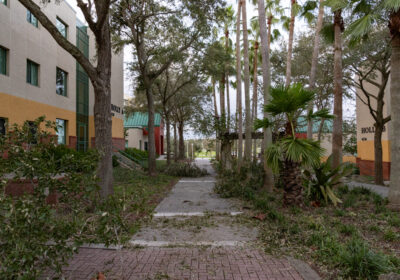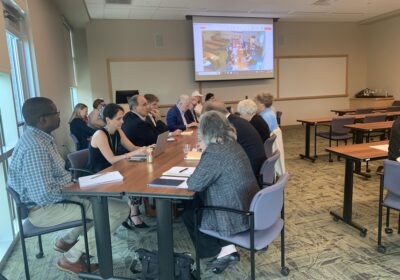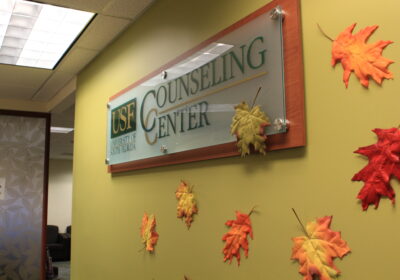Campus Recreation Center plans to cool temperature
The heat generated inside USF’s Campus Recreation Center isn’t just from the number of people exercising, but from the diminishing quality of its air conditioning unit.
But soon students will not have to worry about high temperatures cooling their desire to exercise.
Director of Campus Recreation Eric Hunter said the center will begin replacing its air conditioning units next March, when it undergoes construction to expand its fitness space. The new units should be installed by summer 2011.
“On really hot days, I’ve noticed it’s even hotter in my building, and so the air conditioning I don’t think can keep up,” Hunter said. “The hotter it is, the harder those systems have to work to keep up the temperature you set.”
Students often have the opposite complaint in cooler months, he said.
“We’ve had some complaints that it’s too cold … because the heat doesn’t kick on as soon as it should,” he said. “It’s all the same system, and so it should get fixed accordingly.”
Nainan Desai, assistant director of Physical Plant, said all on-campus buildings are programmed to maintain an average temperature between 70 and 75 degrees, but the air conditioning units in the center have not been replaced since its opening 15 years ago.
At 3:30 p.m. on Wednesday, the temperature reading outside of the center was 90 degrees with 55 percent humidity. Inside the fitness area, the temperature was 86 degrees with 50 percent humidity.
Erica Heule, a junior majoring in biology, said she frequents the recreation center five days a week and feels that it’s “too warm.”
“In there, I feel it’s just over the top,” she said. “It’s really uncomfortable.”
However, Ryan Stilwell, a senior majoring in biomedical science, said the high temperatures complement his workouts.
“When I’m upstairs cycling, I get a good sweat, and then usually I’ll use (the weight machines),” he said. “I feel comfortable.”
Hunter said other universities and fitness facilities have built “studios that are a high humidity, high heat environment” to accommodate patrons like Stilwell, but that it would be “too costly” to build such a studio in USF’s recreation center.
“If you’re on a bike or you’re doing a spinning class, they intentionally raise the temperature because some people like that,” he said. “I think to meet the greater demand, we need to be more in line with, or just have good AC throughout, and not worry about a specialized room that can get hot. The standard for rec centers is that they’re air-conditioned and they’re comfortable to be in.”
Though students are unlikely to experience them, Director of Student Health Services Diane Zanto said there are dangers associated with not being prepared to work out in a hot environment.
“(Heat-related illnesses) would be fairly uncommon in a college-aged population,”
she said. “The only time where you would really tend to see heat exhaustion or heat stroke would be in an athlete or somebody who wasn’t well conditioned, or well hydrated, who worked out extensively in the heat with not enough fluid replacement.”
Heat exhaustion, which is the precursor to a heatstroke, may result in nausea, vomiting and headache and feels comparable to influenza. To avoid such symptoms, Zanto said, students should drink plenty of fluids that include electrolytes and avoid energy drinks that contain caffeine while exercising. Because caffeine is a diuretic, consuming large amounts causes the body to lose more fluids than it takes in.
“I recommend working out, but do it with common sense,” she said. “Work out in the early morning or late evening. Don’t go out in the intense heat of the day, and stay hydrated and monitor your symptoms.”






